You’ve probably seen a comedogenicity chart like these ones (and the one further down the page) before, rating different ingredients on their ability to cause pimples.
Supposedly you check the ingredients list of your product against the comedogenicity list. If it has highly comedogenic ingredients, it will cause pimples, if it doesn’t, then it won’t. It’s simple, systematic and foolproof, right? Unfortunately, it’s not quite that simple…
This post goes into the science behind these comedogenicity ratings, and how exactly you should use them. It also comes in video form!
Click here for the video, scroll down for the rest of the blog post…
What does comedogenicity mean?
Comedogenicity is the tendency of an ingredient or product to clog pores. Ingredients are ranked on a scale:
- 0 – completely non-comedogenic
- 1 – Slightly comedogenic
- 2-3 – Moderately comedogenic
- 4-5 – Severely comedogenic
The numbers in comedogenicity scales come from studies performed by academics, published in peer reviewed journals – this usually means they’re somewhat reliable and valid. However, like with many other skincare claims “supported by the literature”, problems emerge when you dig deeper!
What’s wrong with the comedogenicity scale?
The problem is that the studies that produced the comedogenicity ratings don’t reflect real-world usage, for a number of reasons:
Tests aren’t done in real-world conditions
In an ideal world, we’d test every single product on every single person’s face, and develop a definitive comedogenicity rating list based on that. But this would be impossible – it would cost too much, there are too many products, and getting a lot of people to only use the one product and not change their daily routine for weeks or months at a time would be a mammoth task.
Instead, what’s used in most scientific studies is a model – a situation that mimics the real world, but is simpler to carry out and control. Think crash test dummies, dyed samples of hair, pouring blue liquid onto sanitary pads, patch testing potential allergens on your arm, testing bikes on a race track.
Most of the time these models work pretty well, but sometimes they don’t reflect the real world situation, so their results can’t be applied to everyday life (they have low external validity). In the case of comedogenicity ratings, the models don’t fare so well.
The most common rabbit ear test is flawed
The most common test for comedogenicity is the rabbit ear test, pioneered in cosmetics testing by two famous dermatologists, Albert Kligman and James Fulton, in the 1970s. This involves applying a substance to the inner ear of a rabbit, and waiting a few weeks to see if any clogged pores formed. Because rabbit ears are more sensitive than human skin, they reacted to comedogenic products faster, which was more convenient.
Unfortunately, this also meant that there were lots of false positives, where ingredients that are non-comedogenic in humans would be found to be comedogenic in the hypersensitive rabbit model. Additionally, in the original tests, the scientists didn’t realise that there are naturally enlarged pores in rabbit ears. Some results counted these as acne, leading to even more false positives.
Related post: Purging vs Breakouts: When to Ditch Your Skincare
The most famous false positive is petroleum jelly (petrolatum or Vaseline), which was corrected in the late 1980s, but this was debated until the mid-1990s – that’s why the myth that Vaseline and oily products cause pimples is still so pervasive. This wasn’t the first time the rabbit ear tests were questioned – conflicting results were commonplace, and comedogenicity lists frequently disagreed with each other (and still do).
Related post: Is Mineral Oil Dangerous?
More recently in 2007, dermatologists Mirshahpanah and Maibach went so far as to say:
“[the rabbit ear] model is unable to accurately depict the acnegenic potential of chemical compounds, and is therefore only valuable for distinguishing absolute negatives.” – Mirshahpanah and Maibach, 2007
Tests on human subjects are also flawed
If rabbit ears don’t reflect what happens on human skin, then the obvious solution is to test on humans, right? Yes…but there are problems there too!
- Skin from the subject’s back is usually used. Back skin is very different from facial skin – for example, facial skin has a lot more hair follicles, and it’s exposed to much more sunlight. Whether they’ll react the same way to products is questionable.
- Human tests also use people with large pores who are prone to getting pimples. Will someone with small pores necessarily react the same way? What about people with medium sized pores?
- The ingredients to be tested are swabbed on and occluded by covering with a bandage after application, which is not what you’d typically do with your skincare products.
- The tests were done on relatively small samples (typically less than 10 subjects).
Related post: Video: Skincare and Makeup Tips for Oily Skin
So again, the usefulness of the results of these tests – whether we can apply these ratings in our everyday usage of skincare products and cosmetics – has been overstated.
Comedogenic ingredients don’t make comedogenic products
Here’s the big kicker though – even if an ingredient is comedogenic on its own, it might not be comedogenic in a product. And even if a product contains no comedogenic ingredients, it can still be comedogenic on the skin.
There’s a saying in biology: “The dose makes the poison.” For example, breathing in humid air doesn’t kill you (and is actually good), while breathing in too much water drowns you. Drinking a glass of wine is fine, but 10 glasses will give you a massive hangover and 50 glasses will land you in hospital.
It turns out that clogged pores work the same way:
“Substances that are strongly comedogenic when tested neat (by itself) or in high concentrations become non-comedogenic after sufficient dilution.” – Kligman, 1996
For example, a study by Draelos and DiNardo found that 100% acetylated lanolin alcohol gave a very high comedogenicity rating of 4-5. At 50%, the comedogenicity was still 4-5. But when diluted to 2.5%, the comedogenicity dropped to a measly 1.
Similar results were found for other ingredients:
- Isopropyl isostearate: 100% = 4, 50% = 2-3, 5% = 1-2
- Myristyl lactate: 50% = 3-4, 10% = 2-3
- Isopropyl myristate: 100% = 2-3, 10% = 1-3, 2.5% = 0
- Octyl palmitate: 100% = 2-3, 50% = 1, 5% = 0
Most products contain multiple ingredients, most at concentrations well below 10% – these could easily be rendered benign by dilution. For reference, a typical face lotion is 80% water, which means that the other ingredients max out at 20% concentration (and that’s if the lotion contains only one other ingredient).
The same study also found that cosmetics and skincare products containing notable comedogenic ingredients with 4-5 ratings like cocoa butter, isopropyl palmitate and isopropyl isostearate didn’t increase the formation of microcomedones (baby pimples).
Fulton also noted some additional combination effects: ingredients mixed together could sometimes be more comedogenic than the single ingredients themselves – and sometimes less. What the ingredient was dissolved in could also make a difference.
Cosmetic chemist Colin from Colin’s Beauty Pages gives an excellent analogy: you can’t tell exactly how a cake will taste, even if you know you’ve put in flour, butter and sugar.
In the words of Albert Kligman, pioneer of the comedogenicity scale:
“One cannot determine from a reading of the ingredients whether a given product will be acnegenic or not. What matters solely is the behaviour of the product itself.” – Kligman, 1996
So even the inventor of the comedogenicity scale has flat-out said that it shouldn’t be used to screen ingredients lists!
Even more complexity
Some extra considerations make the “check each ingredient” approach even more inapplicable:
- Your unique skin chemistry partially determines the comedogenicity of an ingredient – even under the controlled restrictions of dermatological studies, the same ingredient and the same procedure gave a range of results on different people. This could be for any number of reasons – different skin microbiome, different activity levels, exposure to different environmental conditions.
- The source of the ingredient can change the comedogenicity – for example, with natural extracts, there’s lots of variation in what chemicals that particular batch contains, and in what quantities.
Related post: Video: Are Natural Beauty Products Better?
So when are comedogenicity scales useful?
From the information above, we can conclude that comedogenicity scales are only useful in very limited circumstances:
1. Checking for strong negatives and positives when narrowing down a breakout cause
If you’re breaking out and you don’t know which product is causing it, checking for severely comedogenic (4-5 rating) ingredients high up on the ingredients list could help point you in the right direction.
If there are zero comedogenic ingredients in a particular product, it’s less likely to be the culprit…though it still could be, so it’s important to remember that this is a starting point only, and not conclusive by any stretch.
2. Avoiding products with large amounts of comedogenic ingredients, if your skin is sensitive
If a product has a bunch of severely comedogenic ingredients high up in the ingredients list, and you’re acne-prone, it’s probably a good idea to avoid the product, or patch test it extensively first and proceed with its use very cautiously.
If you’re already using it and it’s fine, don’t stop just because of the comedogenic ingredients list! Real world experience will trump list-based hazy guesses.
3. Avoiding undiluted comedogenic ingredients without patch testing
There are some ingredients that are commonly used undiluted, particularly natural oils and butters. Comedogenicity ratings can help you navigate these somewhat, if your skin is prone to breakouts.
Coconut oil, for instance, is rated a 4 on the comedogenicity scale, which means it’s pretty comedogenic, but tons of people still use it with no problems. If your skin is breakout-prone, you’ll want to patch test it and proceed with caution, or avoid it entirely and go for an oil that’s less problematic.
Note: Don’t try to use the comedogenicity of the fatty acids within an oil to work out how comedogenic the final oil is – there’s no straightforward relationship. The fatty acids are chemically bound which makes them behave very differently.
Related post: Skincare Oils and Free Fatty Acids: The Science
How NOT to use comedogenicity ratings
- Going on a witch hunt and throwing out any products that contain comedogenic ingredients
- Not buying a product that’s otherwise good, just because it contains a comedogenic ingredient
- Looking up ingredients beyond the first 5 or so (even 5 is pushing it – it’ll be very dilute by then)
- Use comedogenicity ratings as a shortcut to avoid patch testing new products
Comedogenicity ratings for common ingredients
Now that you know how to use comedogenicity ratings, here’s a handy table. Remember – only very clear positives (4-5) and negatives (0-1) are useful, and even then, only in some situations. These ratings point towards tendencies, not hard-and-fast rules.
* from JE Fulton, 1989
^ from WE Morris and SC Kwan, 1983
| Comedogenicity Rating 0-1 | Comedogenicity Rating 2-3 | Comedogenicity Rating 4-5 |
|---|---|---|
| Acetone (0)* | A & D additive (2)* | Acetylated lanolin alcohol (4-5)*^ |
| Acetylated lanolin (0)* | Ascorbyl palmitate (2)* | Cetearyl alcohol + ceteareth-20 (4)* |
| Allantoin (0)* | Butyl stearate (3)* | Cetyl acetate (4)* |
| Almond oil (1-2)* | Capric acid (2)* | Cocoa butter (4)* |
| Aminomethylpropylamine (0)* | Ceteareth-20 (2)* | Coconut butter (4)* |
| Ammonium lauryl sulfate (10%) (0)^ | Cetearyl alcohol (2)* | Ethylhexyl palmitate (4)* |
| Anhydrous lanolin (0-1)* | Cetyl alcohol (2)* | Glyceryl-3-diisostearate (4)* |
| Apricot kernel oil (1-2)* | Cotton seed oil (3)* | Isocetyl alcohol (4)* |
| Archidic acid (1-2)* | D & C red #17 (3)* | Isopropyl isostearate (4-5)*^ |
| Avocado oil (0-3)*^ | D & C red #19 (2)* | Isopropyl linoleate (4-5)*^ |
| Babassu oil (1)* | D & C red #21 (2)* | Isopropyl myristate (5)* |
| Beeswax (0-2)* | D & C red #27 (2)* | Isostearyl isostearate (4)* |
| Behenic acid (0)* | D & C red #3 (3)* | Lanolin acid (4)^ |
| Behenyl erucate (0)* | D & C red #30 (3)* | Laureth-4 (5)* |
| Behenyl triglyceride (0)* | D & C red #36 (3)* | Lauric acid (4)* |
| Bentonite (0)* | D & C red #4 (2)* | Myristyl lactate (4)* |
| Black walnut extract (0)* | D & C red #40 (2)* | Myristyl myristate (5)* |
| Butylene glycol (1)* | Decyl oleate (3)*^ | Oleth-3 (5)* |
| Candelilla wax (1)* | Di-(2-ethylhexyl) succinate (2)* | Oleyl alcohol (4)* |
| Caproic acid (0-2)* | Dioctyl malate (3)* | PEG-16 lanolin (Solulan 16) (4)* |
| Caprylic acid (1)* | Dioctyl succinate (3)* | Polyglyceryl-3-diisostearate (4)* |
| Carbomer 940 (1)* | Eicosanoic acid (2)* | PPG-5 ceteth-10 phosphate (4)* |
| Carboxymethylcellulose (0)* | Ethylhexyl pelargonate (2)* | Steareth-10 (4)* |
| Carboxypropylcellulose (1)* | Evening primrose oil (3)* | Stearyl heptanoate (4)* |
| Carmine (0)* | Glyceryl stearate SE (3)* | Xylene (4)* |
| Carnuba wax (1)* | Grape seed oil (2-3)^ | |
| Castor oil (0-1)*^ | Hydrogenated vegetable oil (3)* | |
| Ceresin wax (0)* | Isopropyl lanolate (3)^ | |
| Cetyl ester NF (1)* | Isopropyl myristate (50%) (3-4)^ | |
| Cetyl palmitate (0)* | Isopropyl palmitate (3-4)*^ | |
| Chamomile extract (0)* | Isostearyl neopentanoate (3)* | |
| Chaulmoogra oil (1)* | Laneth-10 (2)* | |
| Cholesterol (0)* | Laureth-23 (3)* | |
| Chondroitin sulfate (0)* | Mink oil (2-3)* | |
| Coleth-24 (0)* | Myristic acid (3)* | |
| Corn oil (0-3)*^ | Myristyl alcohol (2)* | |
| Cyclomethicone (0)* | Octyl palmitate (2-3)^ | |
| D & C red #33 (1)* | Oleth-10 (2)* | |
| D & C red #6 (1)* | Oleth-3 phosphate (2)* | |
| D & C red #7 (1)* | Oleth-5 (3)* | |
| D & C red #9 (1)* | Palmitic acid (2)* | |
| Diethylene glycol monoethyl ether (EGME) (0)* | Peach kernel oil (2)^ | |
| Diisopropyl adipate (0)* | Peanut oil (2)* | |
| Diisopropyl dimerate (0)* | PEG-100 distearate (2)* | |
| Dimethicone (1)* | PEG-150 distearate (2)* | |
| Emulsifying wax NF (0)* | PEG-200 dilaurate (3)* | |
| Ethyl ether (0)* | PEG-8 stearate (3)* | |
| Ethylene glycol monostearate (0)* | Pentaerythrital tetra isostearate (2)* | |
| Glucose glutamate (0)* | PG caprylate/caprate (2)* | |
| Glycereth-26 (0)* | PG dipelargonate (2)* | |
| Glycerin (0)* | Phytantriol (2)* | |
| Glyceryl stearate NSE (1)* | PPG-10 cetyl ether (3)* | |
| Glyceryl tricapylo/caprate (1)* | PPG-2 myristyl propionate (3)* | |
| Hexylene glycol (0-2)* | PPG-2 PEG-65 lanolin oil (2)* | |
| Hydantoin (0)* | Propylene glycol isostearate (3-4)^ | |
| Hydrogenated castor oil (1)* | Sandalwood seed oil (2)* | |
| Hydrogenated polyisobutane (1)* | Sesame oil (unrefined) (3)* | |
| Hydrolyzed animal protein (0)* | Shark liver oil (3)* | |
| Hydroxypropylcellulose (1)* | Sorbitan oleate (3)* | |
| Iron oxides (0)* | Soybean oil (3)* | |
| Isocetyl stearate (0-1)^ | Steareth-2 (2)* | |
| Isodecyl oleate (1-3)*^ | Steareth-20 (2)* | |
| Isopropyl alcohol (0)* | Stearic acid (2-3)* | |
| Jojoba oil (0-2)* | Stearic acid:TEA (3)* | |
| Kaolin (0)* | Stearyl alcohol (2)* | |
| Lanolin alcohol (0-2)*^ | Sulfated jojoba oil (3)* | |
| Lanolin oil (0-1)*^ | Sweet almond oil (3)^ | |
| Lanolin wax (1)* | Triethanolamine (2)* | |
| Lithium stearate (1)* | Water soluble sulfur (3)* | |
| Magnesium aluminium silicate (0)* | Wheat germ glyceride (3)* | |
| Magnesium stearate (1)* | ||
| Maleated soybean oil (0)* | ||
| Methylparaben (0)* | ||
| Mineral oil (0-2)* | ||
| Myristyl myristate (50%) (0-1)^ | ||
| Octoxynol-9 (0-1)^ | ||
| Octyl dimethyl PABA (0)* | ||
| Octyl methoxycinnamate (0)* | ||
| Octyl salicylate (0)* | ||
| Octyldodecyl stearate (0)* | ||
| Octyldodecyl stearoyl stearate (0)* | ||
| Oleth-20 (0)* | ||
| Olive oil (0-2)*^ | ||
| Oxybenzone (0)* | ||
| Panthenol (0)* | ||
| Papain (0)* | ||
| PEG-10 soya sterol (0)* | ||
| PEG-100 stearate (0)* | ||
| PEG-120 methyl glucose dioleate (0)* | ||
| PEG-20 stearate (1)* | ||
| PEG-40 castor oil (0)* | ||
| PEG-40 sorbitan laurate (0)* | ||
| PEG-5 soya sterol (0)* | ||
| PEG-75 lanolin (0)* | ||
| PEG-78 glyceryl monococoate (0)* | ||
| PEG-8 castor oil (1)* | ||
| Pentaerythrital tetra capra/caprylate (0)* | ||
| PG dicaprylate/caprate (1)* | ||
| PG laurate (0)* | ||
| PG monostearate (0-3)* | ||
| Phenoxyethyl paraben (0)* | ||
| Polyethylene glycol (PEG-400) (1)* | ||
| Polypentaerythrital tetralaurate (0)* | ||
| Polysorbate-20 (0)*^ | ||
| Polysorbate-80 (0)* | ||
| PPG-30 cetyl ester (0)* | ||
| PPG-50 cetyl ester (0)* | ||
| Precipitated sulfur (0)* | ||
| Propylene glycol (0)* | ||
| Propylparaben (0)* | ||
| PVP (0)* | ||
| Safflower oil (0-2)*^ | ||
| SD alcohol 40 (0)* | ||
| Sesame oil (refined) (1)* | ||
| Simethicone (1)* | ||
| Sodium hyaluronate (0)* | ||
| Sodium lauryl sulfate (10%) (0)^ | ||
| Sodium lauryl sulfate (5%) (0)^ | ||
| Sodium PCA (0)* | ||
| Sorbitan isostearate (1-2)* | ||
| Sorbitan laurate (1-2)* | ||
| Sorbitan sesquinoleate (0-1)* | ||
| Sorbitan stearate (0)* | ||
| Sorbitol (0)* | ||
| Soya sterol (0)* | ||
| Squalane (1)* | ||
| Steareth-100 (0)* | ||
| Sterol esters (0)* | ||
| Sucrose distearate (0)* | ||
| Sucrose stearate (0)* | ||
| Sunflower oil (0)* | ||
| Talc (1)* | ||
| Titanium dioxide (0)* | ||
| Tocopherol (0-3)* | ||
| Tocopheryl acetate (0)* | ||
| Triacetin (0)* | ||
| Tridectyl neopentanoate (0)* | ||
| Ultramarine violet (0)* | ||
| Vitamin A palmitate (1-3)* | ||
| Zinc oxide (1)* | ||
| Zinc stearate (0)* |
References
AM Kligman, Petrolatum is not comedogenic in rabbits or humans: A critical reappraisal of the rabbit ear assay and the concept of “acne cosmetica”, J Soc Cosmet Chem 1996, 47, 41-48.
ZD Draelos and JC DiNardo, A re-evaluation of the comedogenicity concept, J Am Acad Dermatol 2006, 54, 507-512.
P Mirshahpanah and HI Maibach, Models in acnegesis, Cutan Ocul Toxicol 2007, 26, 195-202.
JE Fulton, Comedogenicity and irritancy of commonly used ingredients in skin care products, J Soc Cosmet Chem 1989, 40, 321-333.
WE Morris and SC Kwan, Use of the rabbit ear model in evaluating the comedogenic potential of cosmetic ingredients, J Soc Cosmet Chem 1983, 34, 215-225.
Colin’s Beauty Pages – Comedogenic Scale – Why You Should Ignore It
Beautiful With Brains – 3 Things You Need to Know About Comedogenicity Ratings


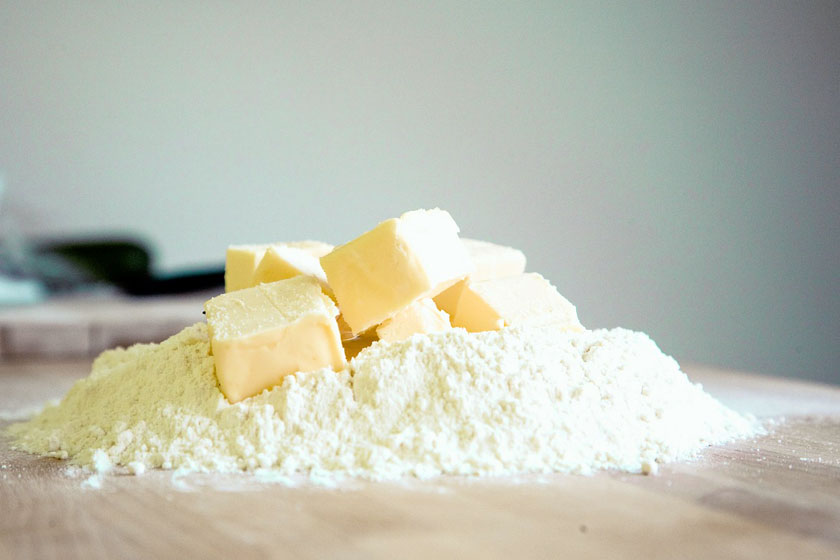
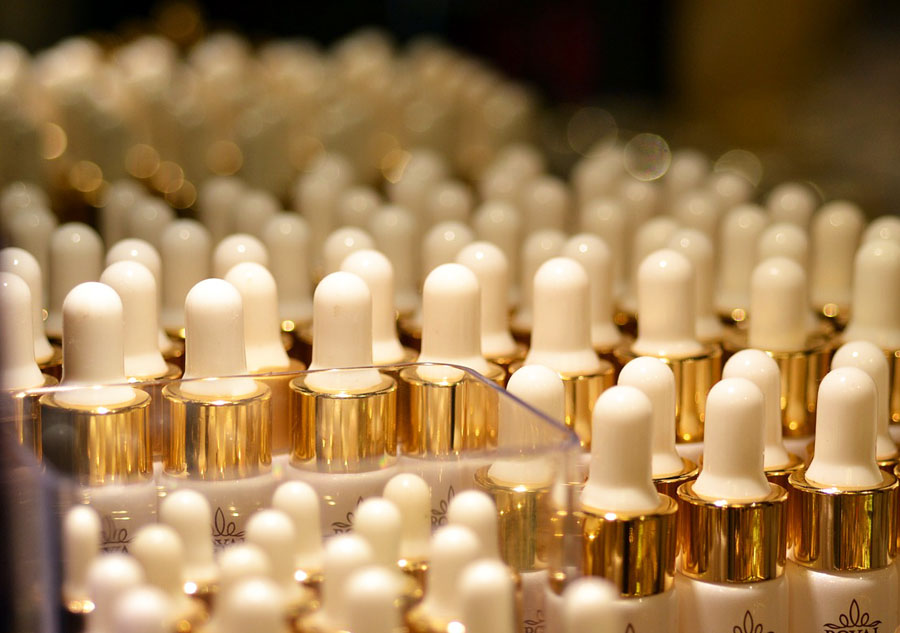
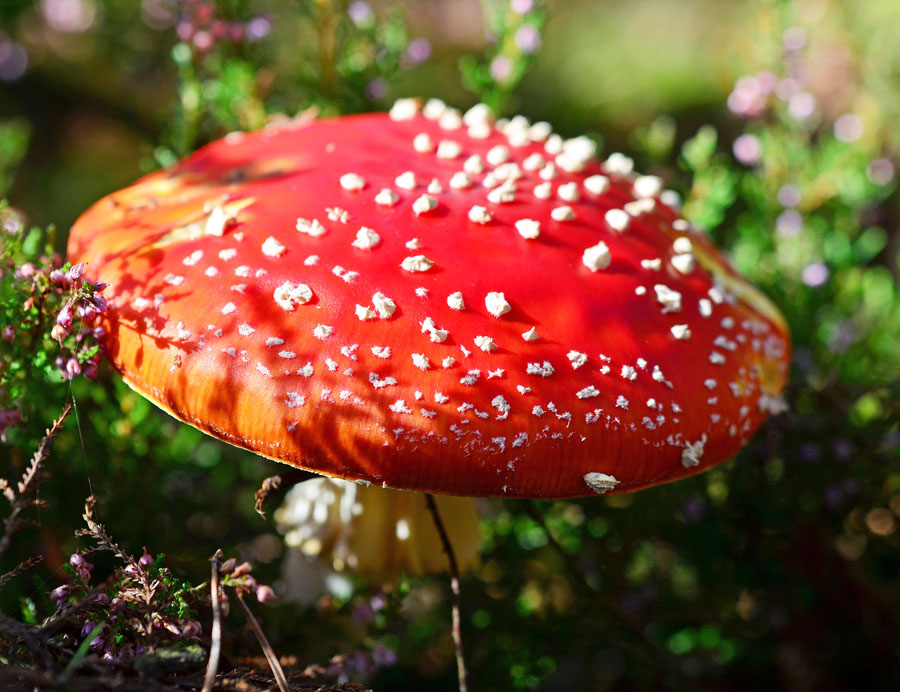


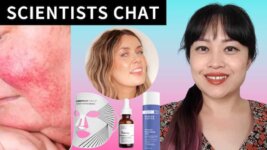

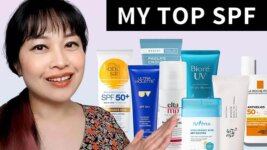
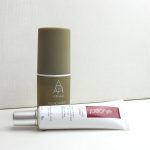
Great read! I totally had a *~*~*~*the more you know*~*~*~* moment about diluted ingredients, it makes complete sense and had never thought of it before!
What an interesting article! I checked a comedogenicity chart just yesterday and was wondering how reliable it was.
Funny how two people looking at the same data can end up writing very similar articles. I wrote the post to the Beautiful with Brains in 2014. The one thing I did miss was your point about not drawing conclusions based on fatty acids in oils. I’ll store that bit into my ever-forgetful brain 🙂
Haha funny how that happens – even funnier when it doesn’t! I think it’s hard to argue when Kligman explicitly states his viewpoint though 🙂
I really enjoy your site by the way – thanks for stopping by!
Not paying for your book AcneEinstien. I know already the crap youre selling. Its not ONE CURE for all.
I agree with this. Beeswax only rates a 1/2 on the comedogenicity scale but if it’s in high quantities in a product that I’ve used I get a horrible rash. It made it hard to find a lip balm stronger than basic chapstick for the winter because so much has beeswax in it.
Ouch! Do you think it’s an allergy? Are you OK with honey?
Very informative, I am going to check all my cosmetics …
That’s not the point at all! Checking your cosmetics against a list does very little.
This article is so awesome. I discovered a few comedogenic ingredients in my Jamieson Vitamin A Night Cream, and got a bit upset until I read your article. I mean, I’ve used the cream for years with no break-outs despite having very sensitive, acne-prone skin – your article explains why this can be the case.
Fantastic! I really dislike it when people throw out products they’ve used for years with no issues based on misunderstandings of the science! I’m still reeling from when my mum tried to throw out anything containing SLS…
Circling back around to this post after browsing your posts…
I actually forget Coconut Oil is considered comedogenic. I work with two plant based skincare: one has their EO’s mixed with coconut oil (having a hard time finding if it’s virgin) and another massage oil is extra virgin coconut oil, both meant for use on the face. In the 4 years of using these my clients have never had issues! Any thoughts on Virgin vs. Non?
It’s hard to say – I think they’re pretty similar since it’s the fats that are comedogenic. The order might go either way: the virgin might be slightly more comedogenic because it contains extra ingredients which could also be irritating, but it would also contain more antioxidants which could reduce irritation.
Hey Lab Muffin,
I know this article was written in 2016, but I feel like it is even more relevant today with the growth in popularity of skincare globally. Personally, I struggle to understand the value and efficacy of skincare products when all I have to go off by is what is marketable by either certain well known active ingredients or ultimately the hype of the brand.
This article has been great in clearing up the reliance on cosmetic charts as I was going down that route. I do want to learn more about skincare but obviously not having a major chemistry, it’s hard to figure what to look for !
I love this blog because it a major component of it is understanding the interactions between beauty products and human physiology. At the end of the day after all the pretty packaging and constant marketing is the foundation of understanding of what is right for the consumer.
If you do see this comment, my question to you is who are the other bloggers or experts than influence you to write this blog?
Much love!
It’s hard for me to recommend other blogs because with digging, a lot of the science-based ones I used to trust have turned out to have incorrect info >.< kindofstephen.com is good though! I mostly read peer-reviewed articles these days.
I have used a few of the Grade 4-5 ingredients over the course of time on my acne skin and never had any issues, so I actually never bothered checking. I would never have thought about to slather myself in natural butters though.
Anne – Linda, Libra, Loca
Hey Michelle, great article. However, the comedogenicity of acetylated lanolin alcohol drops to 1 when diluted to 2.5% not 25%.
Oh my gosh I’m so freaking blind. Thank you!
What is your thought on the sugar cleansing esters? Sucrose Palmitate, Laurate, Stearate, and Cocoate. Are they non-comedogenic? Thank you!
Hi LabMuffin! I’m curious, how do cleansers (or anything else which isn’t leave-on) play into this? Do cleansers with highly comedogenic ingredients high up on the ingredients list even matter if we’re rinsing them off (assuming we rinse well)? Thinking specifically about cleansing oils (many of which have ingredients rated highly comedogenic), here, but I have wondered this in general for cleansers.